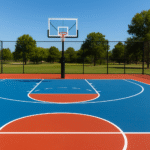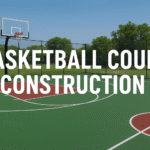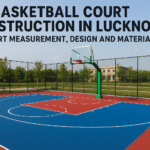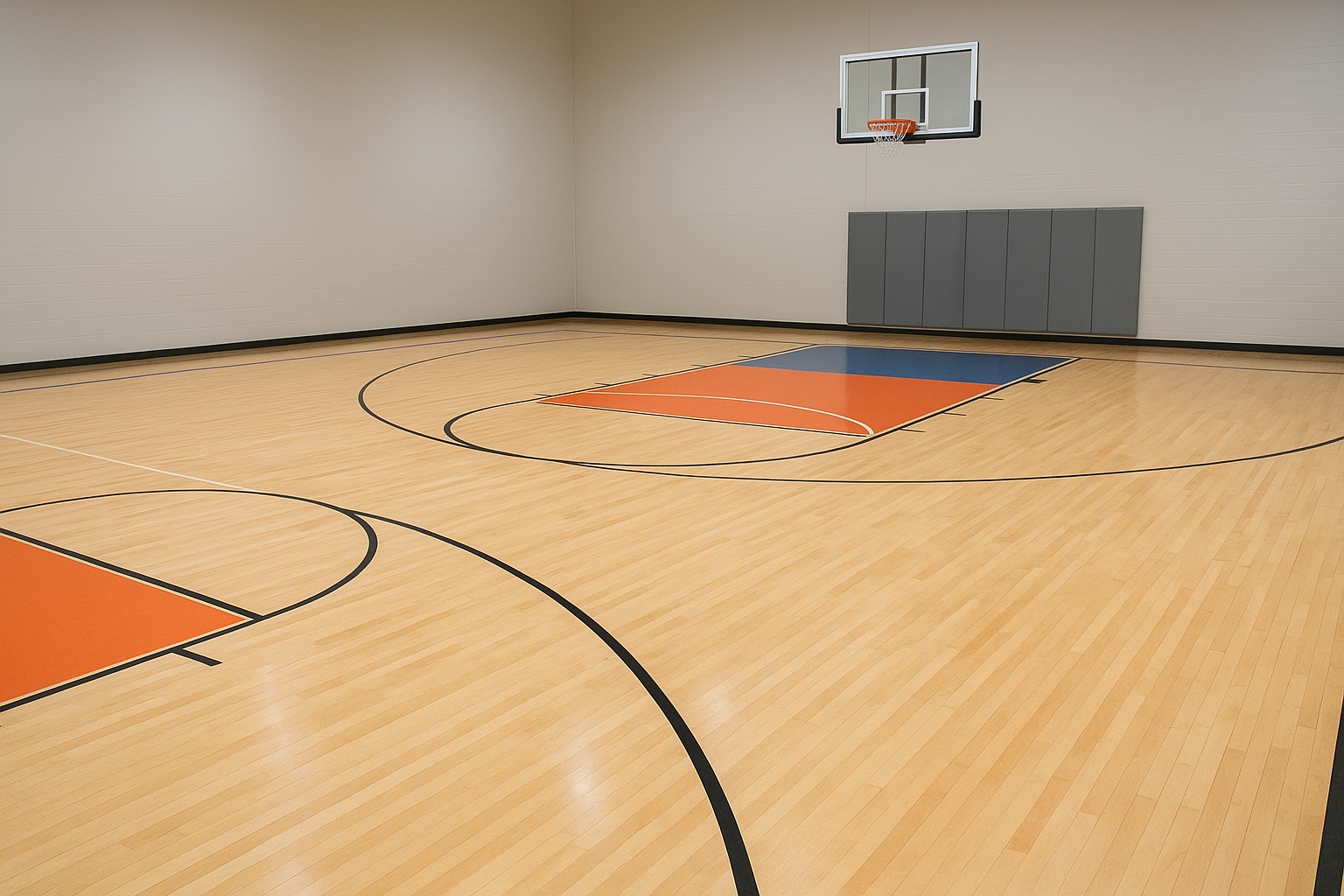What Is Sports Court Flooring?
Sports court flooring refers to specialized surfaces designed to optimize athletic performance, safety, and durability for various sports. From basketball and volleyball to tennis and indoor soccer, the type of flooring can make a huge difference in player comfort, injury prevention, and game quality.
Importance of Choosing the Right Flooring
Choosing the right sports court flooring is more than just aesthetics. It affects traction, shock absorption, ball bounce, and overall safety. A well-selected flooring system ensures players can perform at their best while reducing the risk of injuries.
Types of Sports Court Flooring
Hardwood Flooring
Hardwood is the classic choice for indoor courts like basketball and volleyball. It offers a smooth, uniform surface with excellent ball bounce.
Advantages of Hardwood
- Superior performance for indoor sports
- Elegant and professional appearance
- High durability with proper maintenance
Disadvantages of Hardwood
- Expensive installation and maintenance
- Sensitive to moisture and temperature changes
- Requires regular polishing and refinishing
Synthetic Flooring
Synthetic surfaces are versatile and increasingly popular for both indoor and outdoor courts.
PVC Flooring
PVC is lightweight, easy to install, and offers good shock absorption, making it ideal for multipurpose indoor courts.
Polyurethane Flooring
Polyurethane floors are soft, resilient, and provide excellent player comfort, perfect for sports with high impact.
Rubber Flooring
Rubber surfaces are common for fitness centers and multipurpose sports areas.
Benefits for Multi-Sport Courts
- High shock absorption
- Slip-resistant and safe
- Suitable for gyms, indoor soccer, and playgrounds
Maintenance Tips
- Clean with mild detergents
- Avoid abrasive scrubbing
- Inspect regularly for wear and tear
Clay and Artificial Turf
Clay and artificial turf are mostly used for outdoor sports like tennis and field hockey.
Tennis Courts and Outdoor Use
- Clay courts offer slower ball speed and softer impact
- Artificial turf provides a consistent playing surface in all weather conditions
Pros and Cons
- Clay requires frequent maintenance and watering
- Turf can heat up in direct sunlight but is low-maintenance
Factors to Consider When Choosing Flooring
Performance and Safety
Flooring must provide optimal traction, shock absorption, and ball behavior to ensure player safety and peak performance.
Maintenance and Durability
Consider how often the floor will need cleaning, resurfacing, or repairs. Durable floors save money in the long run.
Cost and Budget
Balance your budget with the quality and lifespan of the flooring. Sometimes investing more initially can reduce long-term costs.
Indoor vs Outdoor Requirements
Outdoor surfaces must withstand weather elements, UV rays, and heavy usage, while indoor floors focus more on shock absorption and aesthetics.
Installation Process of Sports Court Flooring
Site Preparation
- Clear debris and level the ground
- Ensure proper drainage for outdoor courts
- Inspect for moisture or uneven surfaces
Flooring Material Installation Steps
- Lay the base layer (concrete, asphalt, or subfloor)
- Install the chosen flooring material
- Ensure correct alignment and expansion joints
Finishing and Coating
- Apply protective coatings to extend lifespan
- Ensure surface is non-slippery
- Mark court lines and boundaries
Maintenance and Care
Cleaning Techniques
- Sweep and mop regularly
- Use non-abrasive cleaners
- Remove spills immediately
Repair and Resurfacing
- Patch cracks and scratches promptly
- Refinish hardwood every few years
- Replace damaged synthetic tiles
Preventive Measures
- Limit heavy equipment on the floor
- Use mats in high-traffic areas
- Control indoor humidity for wooden floors
Common Mistakes to Avoid
Using Incorrect Flooring Type
Different sports require different surfaces. Don’t mix indoor and outdoor materials.
Ignoring Moisture Control
Moisture can warp hardwood and deteriorate synthetic surfaces quickly.
Skipping Regular Maintenance
Neglect leads to shortened lifespan and higher repair costs.
Cost Considerations
Budgeting for Materials
High-quality materials may cost more but last longer and improve performance.
Installation Costs
Professional installation ensures proper alignment and durability.
Long-Term Expenses
Include maintenance, refinishing, and replacement when planning your budget.
Benefits of Quality Sports Court Flooring
Enhanced Player Performance
A well-maintained floor ensures predictable ball bounce and smooth movement.
Injury Prevention
Shock-absorbing surfaces reduce stress on joints and prevent slips.
Longevity of Court Life
Durable materials minimize the need for frequent repairs, extending court usability.
Trends in Sports Flooring
Eco-Friendly Materials
Sustainable options like recycled rubber and bamboo are becoming popular.
Advanced Shock Absorption
Modern surfaces protect athletes while improving comfort.
Multi-Sport Versatility
New flooring designs cater to multiple sports on the same court.
Choosing the Right Contractor
Experience and Expertise
Pick contractors with proven sports flooring installations.
Portfolio Review
Ask to see completed projects and client testimonials.
Warranty and Support
Ensure coverage for defects and post-installation support.
Conclusion
Selecting the right sports court flooring is a crucial decision for athletes, facility managers, and sports enthusiasts. From hardwood to synthetic, each material has unique benefits and limitations. Understanding your needs, maintenance capacity, and budget ensures a long-lasting, high-performance court. Investing in quality flooring not only enhances gameplay but also protects athletes and preserves your facility’s value.
FAQs
1. What is the best flooring for indoor basketball courts?
Hardwood is the gold standard for indoor basketball due to its consistent bounce and durability.
2. How long does sports court flooring last?
Lifespan varies by material: hardwood 15-25 years, synthetic 10-20 years, rubber 8-15 years.
3. Can outdoor courts use synthetic flooring?
Yes, weather-resistant synthetic materials like polyurethane or PVC are suitable for outdoor courts.
4. How often should I maintain my sports flooring?
Routine cleaning weekly, inspection monthly, and refinishing every few years for hardwood or high-impact areas.
5. Does flooring affect player safety?
Absolutely. Proper shock absorption and traction reduce injury risk and enhance performance.




